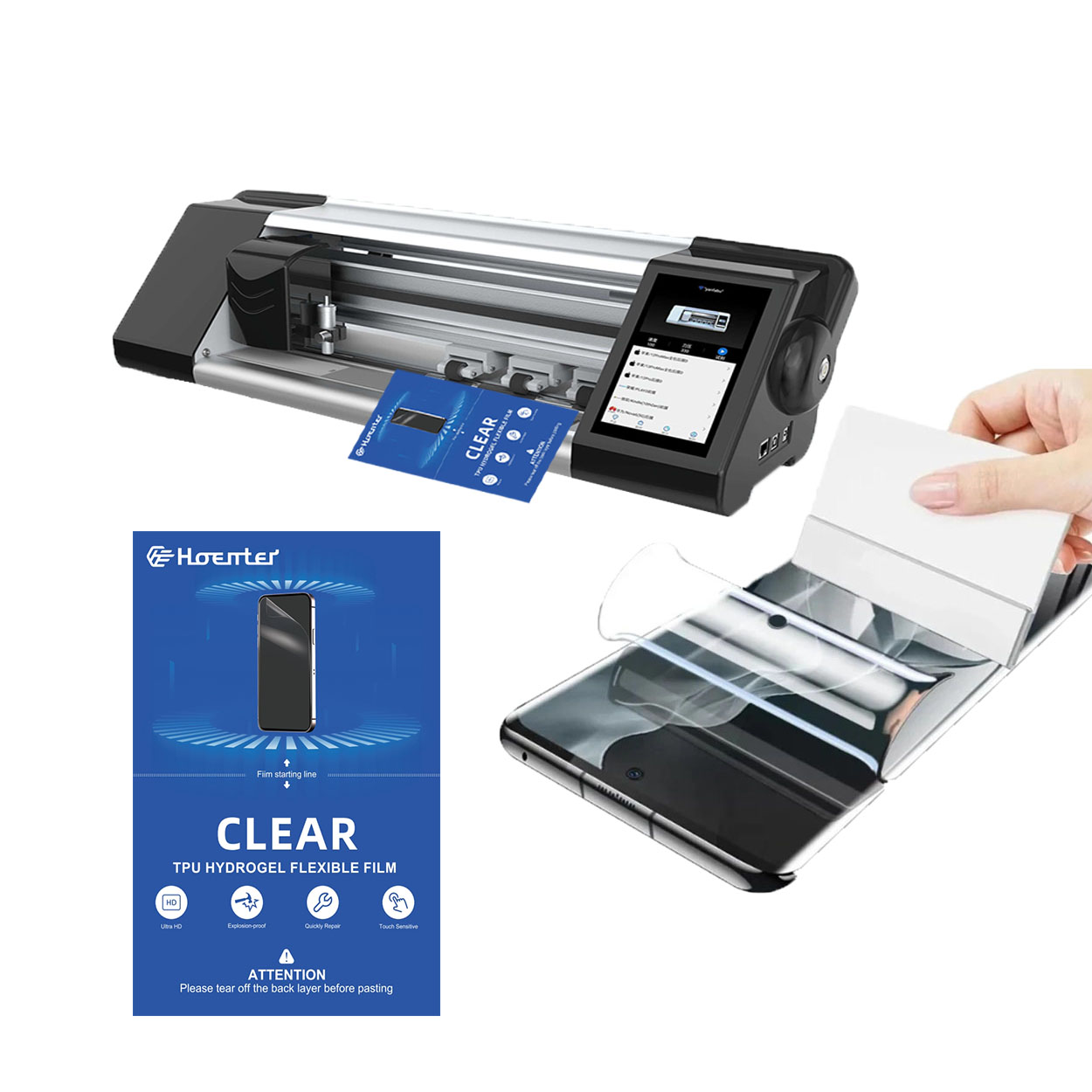
How Flexible Hydrogel Films Are Changing the Screen Protector Industry
Table of Contents
Extract
Summary
The screen protector industry has undergone significant changes over the past few years, driven by advancements in material technology and consumer demands for better protection and usability. Among these advancements, flexible hydrogel films have emerged as a game-changer. Offering superior flexibility, durability, and self-healing properties, flexible hydrogel films are revolutionizing how screen protectors are manufactured, applied, and perceived by consumers. This article delves into how these innovative films are transforming the screen protector industry and what this means for both manufacturers and consumers.
The Evolution of Screen Protectors
Screen protectors have been around for decades, originally made from basic plastic films that offered minimal protection against scratches. As smartphones became more advanced and valuable, the demand for better screen protection grew. This led to the introduction of tempered glass protectors, which provided enhanced durability and scratch resistance but came with their own set of challenges, such as brittleness and difficulty in application.
Enter flexible hydrogel films. Unlike traditional protectors, hydrogel films are made from a soft, flexible material that can conform to the contours of any device, providing edge-to-edge protection. This flexibility, combined with their self-healing properties, makes hydrogel films an attractive alternative to more rigid materials like tempered glass.

Flexibility and Custom Fit
One of the most significant advantages of flexible hydrogel films is their ability to provide a custom fit for various devices. As smartphone designs have evolved, with curved screens and varying dimensions, traditional screen protectors have struggled to keep up. Many glass protectors, for example, cannot adhere properly to curved surfaces, leaving edges exposed and unprotected.
Flexible hydrogel films, on the other hand, are designed to adhere perfectly to any screen shape, including those with curved edges. This ensures that the entire screen is protected without any gaps or exposed areas. The flexibility of the hydrogel material allows it to stretch and conform to the exact dimensions of the device, offering a seamless fit that enhances both the appearance and functionality of the protector.
Moreover, the custom fit provided by flexible hydrogel films means that they can be used on a wider range of devices, from smartphones to tablets and even wearable devices like smartwatches. This versatility is a key factor in their growing popularity, as consumers look for protectors that can offer maximum protection without compromising the design of their devices.
Self-Healing Properties
Another revolutionary aspect of flexible hydrogel films is their self-healing capabilities. Traditional screen protectors, especially those made from glass, are prone to cracking and shattering when subjected to impact. Even minor scratches can become permanent, marring the appearance of the screen and reducing the effectiveness of the protector.
Flexible hydrogel films, however, are designed to recover from minor scratches and dents. The material is engineered to “heal” itself, meaning that small imperfections will gradually disappear over time, leaving the protector looking as good as new. This self-healing property not only extends the lifespan of the screen protector but also ensures that the screen remains clear and easy to view.
The self-healing nature of hydrogel films is particularly beneficial for users who are rough on their devices or who frequently expose their phones to environments where scratches and dings are common. With traditional protectors, even a small scratch can be a permanent blemish, but with hydrogel, the protector can recover, maintaining a pristine appearance and optimal protection.
Enhanced Durability and Impact Resistance
While flexible hydrogel films are softer and more pliable than tempered glass, they are by no means less durable. In fact, hydrogel films offer excellent impact resistance, absorbing shocks and dispersing the energy across the surface of the screen. This reduces the likelihood of the screen itself cracking or shattering in the event of a drop or impact.
The enhanced durability of hydrogel films is due to the unique properties of the material. Hydrogel is a polymer network that is highly elastic, allowing it to absorb and dissipate energy efficiently. This makes it an ideal material for protecting screens from the everyday bumps and drops that are inevitable in daily use.
Furthermore, the elasticity of hydrogel films means that they are less likely to crack or shatter compared to rigid glass protectors. Even if the protector does sustain damage, it is more likely to remain intact, continuing to protect the screen underneath. This is a significant advantage over glass protectors, which can shatter upon impact, potentially damaging the screen and making the protector itself unusable.

Improved User Experience
One of the most critical aspects of any screen protector is how it affects the user experience. After all, a protector that offers excellent protection but interferes with touch sensitivity, screen clarity, or aesthetic appeal is unlikely to be well-received by consumers. Flexible hydrogel films have been designed with the user experience in mind, offering several benefits that enhance usability.
Firstly, hydrogel films are incredibly thin, often much thinner than tempered glass protectors. This slim profile means that the protector adds minimal bulk to the device, preserving the sleek design of modern smartphones and tablets. The thinness of the film also ensures that touch sensitivity is not compromised, allowing users to interact with their devices as they normally would, without any lag or reduced responsiveness.
In addition to preserving touch sensitivity, flexible hydrogel films also offer excellent optical clarity. The material is designed to be crystal clear, ensuring that the screen’s brightness, color accuracy, and resolution are not diminished. This is a crucial factor for users who want to protect their screens without sacrificing the visual experience.
Another aspect of user experience that flexible hydrogel films excel in is ease of application. Unlike glass protectors, which can be challenging to align and apply without bubbles or misalignment, hydrogel films are more forgiving. The flexible material allows for easier adjustments during application, reducing the likelihood of errors and making the process more straightforward for users.
Environmental Considerations
As consumers become more environmentally conscious, the sustainability of the products they use is becoming an increasingly important consideration. Traditional screen protectors, particularly those made from tempered glass, can contribute to environmental waste due to their production processes and the difficulty of recycling them.
Flexible hydrogel films, however, offer a more environmentally friendly alternative. The production of hydrogel involves fewer energy-intensive processes compared to glass, resulting in a lower carbon footprint. Additionally, because hydrogel films are more durable and longer-lasting, they do not need to be replaced as frequently as traditional protectors, reducing waste.
Moreover, some manufacturers are beginning to explore biodegradable and eco-friendly hydrogel materials, further enhancing the sustainability of these protectors. As the industry continues to innovate, we can expect to see even more environmentally friendly options become available, aligning with the growing demand for sustainable consumer products.
Cost-Effectiveness and Accessibility
While flexible hydrogel films offer numerous benefits over traditional protectors, they are also becoming more cost-effective and accessible to a broader range of consumers. As the technology behind hydrogel films continues to advance, the cost of production has decreased, making these protectors more affordable.
This cost-effectiveness is crucial for both consumers and manufacturers. For consumers, it means that they can access high-quality protection without breaking the bank. For manufacturers, the lower production costs allow them to offer competitive pricing while maintaining healthy profit margins.
Additionally, the accessibility of hydrogel films is further enhanced by the wide range of devices they can protect. From smartphones to tablets to wearable devices, hydrogel films can be customized to fit virtually any screen, making them a versatile option for consumers with multiple devices.
The Future of Flexible Hydrogel Films
The impact of flexible hydrogel films on the screen protector industry is undeniable, and the future looks promising for this innovative material. As research and development continue, we can expect to see even more advancements that will further enhance the benefits of hydrogel protectors.
One area of potential growth is the development of advanced coatings and treatments that can be applied to hydrogel films. These coatings could enhance the already impressive properties of hydrogel, such as improving scratch resistance, adding antimicrobial properties, or reducing fingerprint smudges. Such advancements would make hydrogel protectors even more appealing to consumers, further driving their adoption.
Another exciting prospect is the potential for smart hydrogel films. With the rise of smart devices and the Internet of Things (IoT), there is an opportunity to integrate additional functionalities into hydrogel protectors. For example, smart hydrogel films could incorporate sensors that monitor screen conditions, provide haptic feedback, or even adjust their properties in response to environmental factors. These innovations could transform screen protectors from passive layers of protection into active components of the user experience.
Conclusion
Flexible hydrogel films are undoubtedly changing the screen protector industry, offering a combination of flexibility, durability, self-healing properties, and user-friendly design that traditional protectors simply cannot match. As the technology behind these films continues to evolve, their impact on the market will only grow, providing consumers with better protection and enhancing the overall usability of their devices.
For manufacturers, embracing the potential of flexible hydrogel films represents an opportunity to stay ahead of the curve, offering innovative products that meet the evolving needs of consumers. As the demand for advanced screen protection continues to rise, flexible hydrogel films are poised to play a central role in the future of the industry.
Comments

Hydrogel Blade Cutting Machine Technology-Innovations and Future Trends
Hydrogel Blade Cutting Machine Technology represents a significant advancement in the precise and efficient processing of hydrogel materials, initially developed for medical applications due to their high water content and biocompatibility.

The Best Screen Hydrogel Films for Gaming Devices
Hydrogel films have emerged as a highly regarded option for screen protection in gaming devices, offering a blend of flexibility, durability, and advanced features that cater specifically to the needs of gamers.

How to Remove Screen Protector from iPhone?
By following these steps, you can safely remove and replace your iPhone’s screen protector, ensuring your device remains in top condition.

How to Get Air Bubbles Out of a Screen Protector?
By following these tips and techniques, you can ensure a flawless screen protector application every time.

How to Put in a Screen Protector?
By following these guidelines, you can apply a screen protector perfectly and keep your smartphone safe from damage.
Tags
Find All knowledge and trends from our blog, get the wholesale price and best quality from our factory.

What Film Cutting Machine and Its Application
Film cutting machines have played a crucial role in the evolution of filmmaking and various industrial processes by enabling precise cutting and splicing of film materials.

What Is a Screen Protector Cutting Machine?
A screen protector cutting machine is a specialized device designed to produce custom-fit screen protectors for various electronic devices, including smartphones, tablets, smartwatches, laptops, and monitors.

How Mobile Phone Screen Protector Cutting Machine Work?
A mobile phone screen protector cutting machine is a sophisticated device designed
to produce customized screen protectors for various digital devices with high preci
sion and efficiency.

Characteristics of Mobile Phone Tempered Glass and Mobile Phone TPU Screen Protector
Thermoplastic polyurethane (TPU) screen protectors are flexible, durable, and
self-healing plastic films designed to protect electronic device screens from
scratches, impacts, and other potential damages.

Revolutionize Device Protection with Screen Guard Cutting Machine
Whether you possess a smartphone, tablet, or smartwatch, this versatile machine accommodates a vast array of devices. It seamlessly adapts to the dimensions of your gadget, offering a custom fit that generic protectors can’t match.

Screen Protector Lifetime Warranty
A screen protector lifetime warranty is a guarantee provided by manufacturers that
promises to repair or replace a screen protector for the lifetime of the product, under specific terms and conditions.





